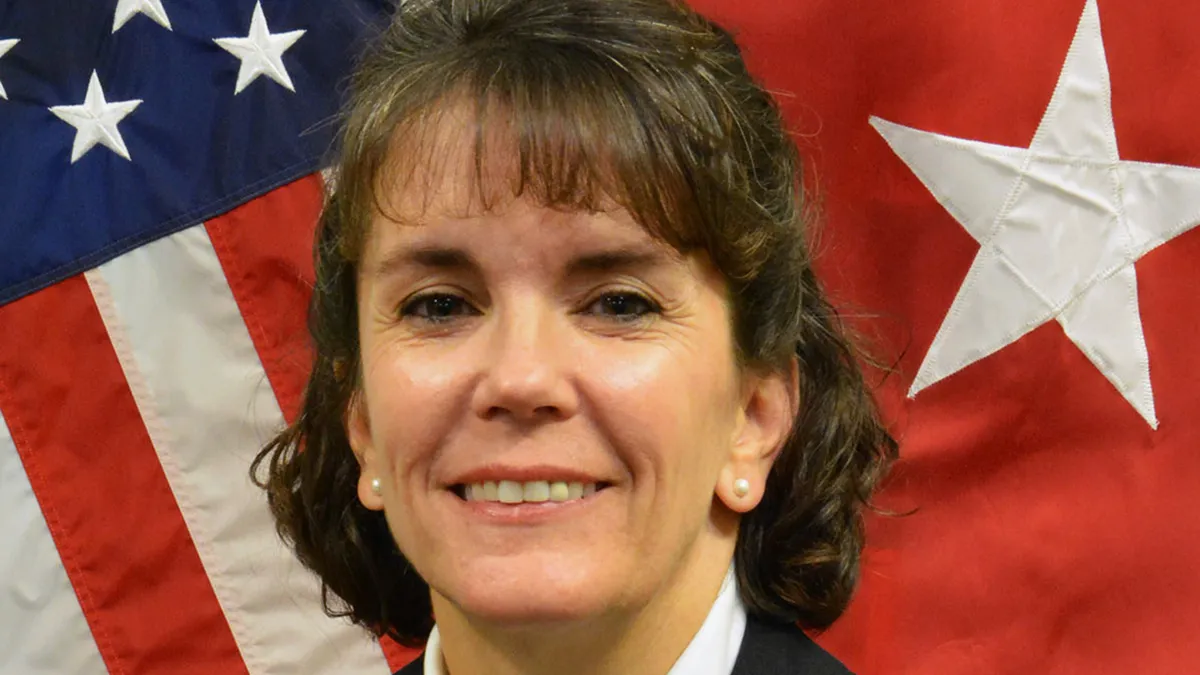Twenty Years After Katrina, the City’s All-Charter Schools System Is Failing Many Families
By ieyenews
Copyright ieyenews

By Ashana Bigard and Elizabeth K. Jeffers
Author Bios:
Ashana Bigard is the director of Amplify Justice, an educational advocate, and author of Beyond Resilience: Katrina 20. A dedicated mother of three, she serves as an education fellow for the Progressive magazine’s Public Schools Advocate project and is a director-producer of numerous video and audio productions. Follow her on Bluesky @AshanaBigard.
Elizabeth K. Jeffers, PhD, is an assistant professor at the University of New Orleans who began teaching in pre-Katrina New Orleans public schools. Her scholarship focuses on school choice and community-based inquiry. Her research has been published in Educational Evaluation and Policy Analysis, Educational Policy, the International Journal of Qualitative Studies in Education, and other scholarly journals. Follow her on Bluesky @ekjeffersphd.
Source: Our Schools
To mark the 20th anniversary of Hurricane Katrina’s devastation of New Orleans, numerous articles and opinion pieces have appeared in prominent media outlets touting the supposed improvement of the city’s public school system since the storm.
Katrina’s immediate aftermath saw the state of Louisiana disempower the democratically elected school board by taking over the management of 107 out of 128 schools. This led to the termination of 7,600—mainly Black and women—teachers, paraprofessionals, cafeteria workers, clerical workers, principals, and other permanent employees, and the eventual conversion of all of the city’s public schools into privately managed charters.
A Washington Post column, “‘Never Seen Before:’ How Katrina Set off an Education Revolution,” by British journalist Ian Birrell, proclaimed the transformation a “miracle.” Another opinion piece in The 74, “The Inconvenient Success of New Orleans Schools” by Ravi Gupta, the founder and former CEO of a charter school network, stated that the New Orleans school system shaped by Katrina was “a model that should theoretically appeal to both sides of America’s education debates. It delivered the academic results that reformers promised while addressing the equity and community concerns that critics raised.”
As proof of their arguments, both authors pointed to a June 2025 report, “The New Orleans Post-Katrina School Reforms: 20 Years of Lessons” by Douglas N. Harris and Jamie M. Carroll of the Education Research Alliance for New Orleans. Pulling from the data presented in that study, Birrell said the case for declaring New Orleans-style education reform a “remarkable success” is “pretty definitive,” and Gupta called this supposed success an “unequivocal conclusion.” As a longtime youth advocate and community leader and an assistant professor at the University of New Orleans, who was a public school teacher in the city, we invite you to consider whether this data alone proves that New Orleans public schools and the families they serve are better off after 20 years of “reform.”
Although Gupta warns against “[falling] into the tyranny of the anecdote when reporting on fraught education debates like those over the meaning of the New Orleans reforms,” we’d like to tell you about Rio, whose last name has been withheld for privacy reasons. Rio attended 12 different schools in New Orleans, many of which were shut down suddenly, before he finally graduated from a school that is now also closed. Rio’s story is not atypical of the human costs of the New Orleans school system, where closures are a defining feature and evidence that the disaster Katrina wrought on the schools is still happening.
Forced to traverse the fragmented charter system that has replaced the public system of neighborhood schools, New Orleans students are often traumatized by multiple school closures. Decades of research attest to the academic, emotional, and economic harms that result from severing social connections that families, faculty, and staff have had with schools and with one another.
For instance, obtaining a job reference letter from a former teacher should be simple for students to do, but that task becomes an obstacle course for many young adults from New Orleans, like Rio. Black Man Rising, a national group providing outreach and mentorship for Black youth, had to intervene to help him obtain the letter that made the difference between him being able to financially support himself and being just another addition to the statistics of Black youth who are unemployed and incarcerated.
Rio’s story illustrates a central paradox of the New Orleans system: Black families and communities continue to be severed and displaced as a result of failed leadership at the federal, local, and state levels. While the storm may be over, the disaster continues. On the other hand, white children in New Orleans rarely experience school closures.
The Near Obliteration of Democratic Public Schooling
In addition to severing families from their neighborhood schools and educators, Katrina reforms have nearly obliterated democratic participation in ways that would shock most Americans.
New York University professor Domingo Morel contends in his book Takeover: Race, Education, and American Democracy that state takeovers do not generally improve test scores or graduation rates; instead, they are about removing political power, as Black school boards have historically functioned as entryways for Black political leaders.
In a similar vein, Louisiana legislators, in the immediate aftermath of Katrina, passed Act 35 in November 2005, which expanded the state-run Recovery School District’s (RSD) jurisdiction over New Orleans public schools during an emergency session when voters were dispersed across the country and many were still searching for their loved ones. The new laws removed the parent and teacher approvals required for charter conversions.
State legislation also enabled the termination of the majority Black teaching force, gutting the teachers’ collective bargaining unit, United Teachers of New Orleans (American Federation of Teachers, Local 527), and further removing obstacles for top-down reform. Research conducted by University of Wisconsin-Madison professor Kevin L. Henry and his co-author has shown how the “charter school authorization and application process” used in post-Katrina New Orleans “reproduces white dominance.” While another study published in the journal Urban Education points to how charter schools consolidate power “in ways that limit local Black political power.”
Consider the example of Kira Orange Jones, whose case perfectly illustrates how educational democracy has been dismantled. In 2011, Jones raised $478,000 for her Board of Elementary and Secondary Education campaign—much of it from out-of-state donors connected to Democrats for Education Reform and charter school advocacy groups. Her opponent raised just $19,000, creating a 25-to-1 spending disadvantage. But the campaign money was just the beginning. Jones simultaneously served as executive director of Teach For America’s (TFA) Greater New Orleans chapter while sitting on the board that approved TFA’s $1 million state contract with Louisiana. When ethics complaints were filed in 2012, the Louisiana Ethics Board overruled its own staff’s recommendation that Jones choose between her TFA position and her board seat.
While NOLA Public Schools mandates charter school governance boards to include an alumnus or a parent, legal guardian, or grandparent, who is either elected or appointed, Katrina school reforms have nearly obliterated democratic participation. Parents often don’t find out when school board meetings are happening, let alone have access to board members’ email addresses or phone numbers to voice concerns. Even local reporters who tried to obtain basic contact information for charter school board members have been stonewalled. There is no state requirement that charter school boards meet at times that are convenient for working parents to attend.
The absence of neighborhood schools is an additional obstacle for parents who rely on public transportation. And although charter schools seemingly returned to an elected school board in 2018, the public has virtually no control over individual charter schools, which maintain complete autonomy over curricula, calendars, certification requirements, contracts, and daily operations.
Shadow Suspensions and ‘Behavior Problems’
Louisiana has long been among the states with the highest rates of student suspensions and expulsions, and Black students are more than twice as likely to be suspended compared to white students and receive longer suspensions for identical infractions, according to an analysis of 2001to 2014 figures by Education Research Alliance for New Orleans. In New Orleans, suspension and expulsion rates rose sharply after the storm but then stabilized. Nevertheless, some charter schools continued to suspend and expel high percentages of students.
But that’s just the official data. More recently, several parents have reported that their children are being sent home from school without receiving official suspension papers. Elizabeth’s field notes attest to students’ reports of one charter school network sending students to “the RC room” (restorative center) where they are forced to sit in cubicles, complete detention assignments, and write apology letters in a secluded room. This shadow suspension system allows schools to push out Black students without creating the paper trail that might trigger oversight or intervention. Children lose days or weeks of education in bureaucratic limbo, with no formal process and no recourse. And large numbers of students, often labeled as “behavior problems,” remain enrolled in alternative schools, rather than mainstream degree programs, according to state data.
Community-Rooted Educators Replaced by Managers
New Orleans teachers once lived in their communities. Most were career educators who taught generations of children, creating lasting bonds that extended far beyond the classroom.
Ashana experienced this personally at a small school called New Orleans Free School. As someone who is extremely dyslexic, she felt inadequate throughout most of her educational life until she encountered teachers like Woody, Janice, Jeanette, and Jim—two of whom, Jeanette and Jim, have since passed away. Woody still leaves encouraging comments under articles she has published, telling her he is proud of her. He, along with the others, encouraged her and insisted she could be brilliant despite her spelling difficulties. They told her she could be a writer. They emphasized that we all have different skill sets that we can develop, and that none of us is perfect, but that we can practice and grow.
This encouragement didn’t end when Ashana left Free School. The advice and support continue today. That’s what it means to have authentic relationships with your teachers. That’s what it means to be rooted in your community. Unfortunately, Ashana didn’t have the opportunity to send her children to that school to be educated by those incredible educators. The school that gave her a love of learning shut down.
The structure of charter schools severs critical bonds between schools and families. For instance, in her book Beyond Resilience: Katrina 20 Ashana recounts a teacher reaching out to her for resources to help with one of her students years before the storm. The child’s mother, who worked two jobs as a housekeeper and restaurant server, struggled to care for her seven children.
Her nine-year-old son often arrived at school dirty and disheveled because their washing machine had broken, and despite the mother’s instructions, the children didn’t wash their uniforms in the tub while she worked overnight shifts. Although the mother worked tirelessly, her extremely low reading level meant she was unaware of how to apply for assistance programs that could have helped her family. Most importantly, she probably didn’t believe she qualified for help. This teacher understood the family’s circumstances and worked to connect them with resources rather than simply reporting the situation to authorities.
This kind of close relationship between educators and families has become increasingly rare in the Katrina experiment. For instance, Ashana encountered a similar situation that ended differently. A family facing tough times was reported to the Office of Children and Family Services (OCFS) multiple times for neglect. When OCFS attempted to provide services, the mother, terrified that her children would be taken and placed in foster care as she had been, and having suffered abuse in that system, fled Orleans Parish with her children. She moved them to a motel in St. Bernard Parish, leaving everything behind. The children weren’t enrolled in school for almost a year until someone tracked them down and helped them return to the city and reintegrate into the school.
Somehow, punitive measures for Black parents and children have been equated with success—which raises the question: What exactly is the reform proponents’ definition of success, and what was the goal from the outset?
The current system has replaced community-based educators with a top-heavy administrative structure. New Orleans charter schools spend significantly more money on administration, even as teacher shortages remain high. For instance, InspireNola Charter Schools, which only manages seven schools, paid three executives a total of $667,000 for the fiscal year 2023.
Meanwhile, the constant “churning” of schools and the absence of a collective bargaining agreement have led to a larger system that dehumanizes teachers. In fact, the RSD required certified teachers who chose to return to their pre-Katrina schools to complete a “basic skills test” (akin to a literacy test).
But that was only the beginning of the disaster for New Orleans educators. One Black veteran explained to Elizabeth: “The RSD was bouncing teachers around like balls.” That is, the state takeover district issued letters labeling numerous experienced teachers as “surplus” when their schools transformed into charters. Many of these schools recruited inexperienced teachers who were expendable, accepted lower salaries, and could be programmed to adhere to the ideology of reform. The absence of collective bargaining power, arbitrary closures, and charter takeovers eventually led many career teachers to “choose” between commuting several hours a day to schools in outlying parishes and changing careers. Twenty years after the district’s purging of its unionized teachers (the United Teachers of New Orleans), only five of the city’s 90 charter schools are unionized.
In another example, Ashana recounts in her book about how a teacher whom she advocated for brought a doctor’s note to her school’s chief financial officer to document a urinary tract infection and request restroom breaks. The administrators emailed her to offer reimbursement for adult diapers. This example of denying teachers basic respect and humanity illustrates what is seen as a continual disaster. If educators are treated this way, imagine the conditions students face.
The Cruel Reality of ‘Choice’
The current “choice” system has created impossible decisions for families. Consider the mother in New Orleans East who must choose each morning which of her two children to accompany to their bus stop, because the system doesn’t allow siblings to attend the same school. She would have to explain to her young daughter, who is clutching a bright orange whistle for safety, “Today I’m going to stand with your brother, but tomorrow it’ll be your turn.” The little girl, frightened at the prospect of standing alone, pleads with her mother, but is told, “I’m sorry, you know this is just the way it is for right now.”
This mother, with tears in her eyes as her children clung to her legs, captured the cruel reality. With this new choice system, she doesn’t get to choose to have both of her children sent to the same school. She gets to choose which one she can stand with every morning. That’s no choice at all.
Propaganda Masquerading as Research
The Cowen Institute’s research reveals the deception at the heart of these claims. Despite proclaiming that “parents were overall happy with the way schools handled” recent challenges, the survey data released in November 2024 shows that only 42 percent of parents who responded were Black, whereas 75 percent of the city’s public schools’ students are Black.
The research further shows that parents praising the charter system were disproportionately white and affluent, and most of them didn’t even have their children enrolled in the charter schools for which they were providing positive feedback. This is propaganda masquerading as research, as white families are being asked to evaluate schools their children don’t attend, while the concerns of Black families, whose children make up the vast majority of students actually experiencing these schools daily, are dismissed.
Similarly, a 2019 poll of parent attitudes and experiences with NOLA public schools reported a sample with an overrepresentation of parents and guardians whose children attended selective admissions schools.
Information access and distribution are key to molding behaviors and convincing voters to give up their voice and “trust” the market. Paul Hill of the Center on Reinventing Public Education advises educational leaders to gain alliances and counter “hostile narratives” through “information strategies.”
Researchers from the Brookings Institution and Tulane University partnered with NOLA Public Schools to assess the potential impact of deploying “information interventions” on applicants’ school choice behaviors. The intervention, funded by the Walton Family Foundation, involved contacting families at targeted times via multiple modes of communication, such as “U.S. mail, email, and text message,” to increase “the number of ways in which they heard from us.” Based on this study and several others, it is clear that propaganda relies on repetition and consistency, rather than science and facts, to mold behaviors and beliefs.
The state of Louisiana assists in the propaganda campaign by manipulating the data. The Stanford Center for Opportunity Policy in Education has released a report that explains the changes in the metrics for school ratings and test scores during the first decade of reform. The Louisiana Department of Education continues to change the metrics for school ratings. In 2025, it is again implementing a new “Grow. Achieve. Thrive.” accountability system that provides yet another revised framework for evaluating Louisiana schools.
Cultural Destruction
The “20 Years of Lessons” analysis by Harris and Carroll overlooks how the subsequent termination of the city’s predominantly Black New Orleans educators has inflicted harm upon our city’s cultural institutions.
Research has found that schools with larger numbers of Black teachers or a Black principal have greater representation of Black students in gifted and talented programs. However, the charter school leaders recruited into New Orleans after Katrina often lacked familiarity with Black communities and overlooked the importance of music and arts education.
“No excuses” charter schools are centered on test preparation in math and reading, at the expense of teaching art and music. Research shows that charter schools, especially those enrolling low-income students, are less likely than traditional public schools to offer music and arts courses. Yet, studies have found that cognitive skills and academic achievement increase when children partake in educational programs that involve playing musical instruments, and that students who were highly engaged in music were academically ahead of their peers. Musical instruction specifically enhances creativity in mathematics.
In New Orleans, robust music and arts integration seems to only take place at a handful of charter schools attended by white and middle-class children. One charter school provider, which has two campuses located in white Uptown neighborhoods, offers general art, creative movement, theater, and music courses for all students.
Similarly, the Willow High School (formerly Lusher Charter School) provides students, most of whom are white and middle class, the ability to select a concentrated program of study in a chosen arts discipline. While we applaud these boutique mission-driven programs, our notion of success envisions Black low-income children throughout the city also having access to and learning via music and arts integration.
Success for Whom?
Harris and Carroll overlook stability as a crucial measure of success. Organizations, parents, and activists who work alongside the autonomously run charter schools often voice their frustration in building relationships with school administrations, only to find that the administration changes or the school shuts down or is renamed. New Orleans public school students, who have traversed the fragmented charter system, are often traumatized by multiple school closures.
To be sure, academic outcomes have increased, but for whom? From 2004 to 2024, Black student enrollment in New Orleans public schools has decreased by 42 percent, while white student enrollment has more than doubled. Seventy-five percent of the city’s white children attend a handful of A and B schools. Fewer than 5 percent attend a D or F school. The fragility of the charter system’s claims became glaringly apparent in spring 2019 at John F. Kennedy High School. On graduation day, 178 students walked across the stage to receive their diplomas, but state auditors revealed later that 87 were ineligible to graduate.
So much of the data that analysts use to prove the success of New Orleans school reform overlooks young people who aren’t enrolled in school. Tulane University’s Cowen Institute reported that in 2018, 15.5 percent of youth ages 16 to 24 were disconnected from work or school in New Orleans, compared to 11.2 percent nationally.
The charter school propaganda machine works overtime to convince us that New Orleans schools are a “success story.” But success for whom?
Redefining Success
None of this is to say that the data analysis that Harris and Carroll, and so many other economists and social scientists, conduct doesn’t have a place in telling the story of New Orleans education reform in the past 20 years. But data alone is not enough.
This is a moral problem, and relying on an economic argument to justify the success of the current school system that reformers built in New Orleans after Katrina doesn’t help capture the ground realities.
It’s correct that more children in New Orleans are getting higher test scores and graduation rates. If “success” is being accomplished by culturally programming a population of Black youth who lack self-actualization and undervalue their own heritage, embrace Jim Crow schooling, and accept a system that annually sends them to different schools, while white families have options to enroll their children in stable A and B schools with arts and music integration, then we say no to this flawed schooling system.
To be clear, we are not calling for a return to a system that excluded and subjugated Black children, families, and communities by design. We envision a democratically elected school board that answers to its constituents, parent-teacher organizations, student government associations, and unions rather than dozens of autonomously run private boards that often only answer to their funders. We envision Black and other marginalized communities, families, and students having the power to construct their [our] own schools and to participate in decisions about discipline policies, curriculum, teachers, and leadership, and that means that we need laws and policies to ensure our voices are heard. We envision more schools like Leah Chase School, which NOLA Public Schools opened in 2024 in response to community requests for a traditional public school. It is perhaps one of what could be many permanent traditional public schools named after New Orleans cultural icons and civil rights pioneers.



